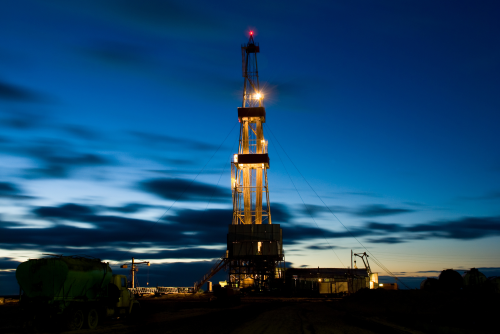
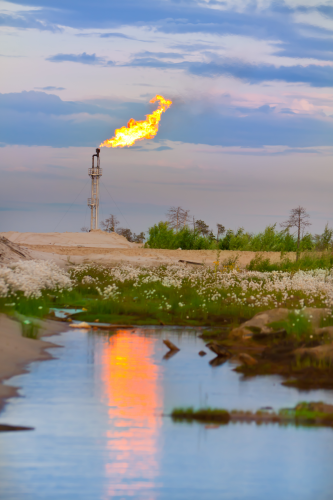
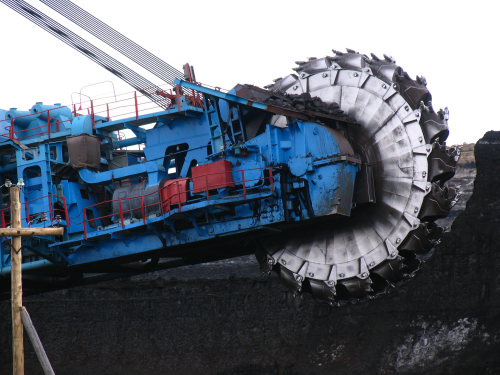
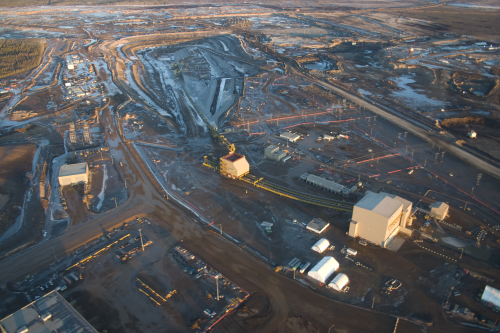
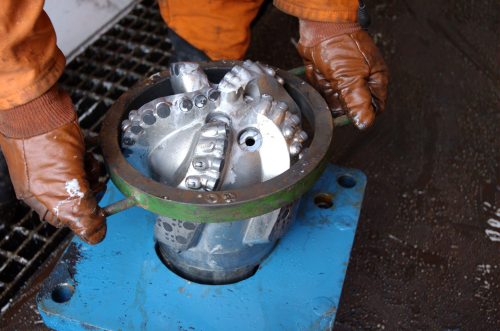
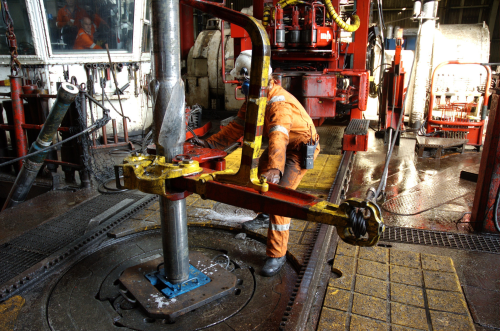
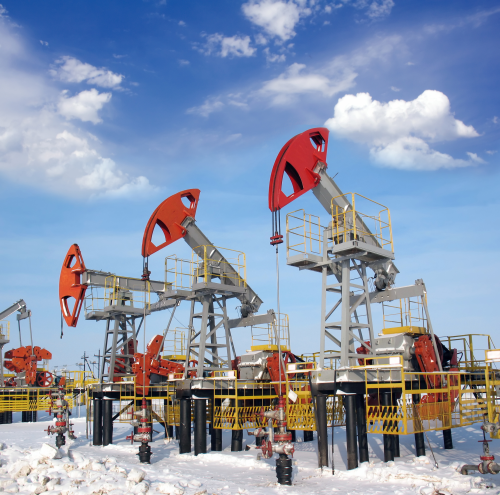
In 2010 the consumption of crude oil and natural gas represented over 57% of the world’s total usage of energy in that year. The balance was made up of coal (at 30%), and then nuclear and renewables at 13%. The picture of the situation in a single year, given in this way, allows no understanding of the pattern of growth (or decline) in use of the various sources of energy. In fact, over the last decade (from 2000 to 2010) crude oil consumption has been the slowest growing of the three largest fuels, at only 1.2% per annum. Natural gas consumption showed the second fastest growth, at over twice the rate of crude oil (2.8%), and, surprisingly (considering the opprobrium leveled at it by global warming campaigners), coal consumption has been growing fastest - at a rate of more than three times that of oil (4.0%) - largely on the back of China’s rapidly expanding usage, up over 10% in 2010, to nearly half of the global consumption of coal. These consumption figures must also be looked at in terms of global reserves of energy materials, since the currently forecast lifetimes, at least for oil and gas, are quite short. The reported energy material lifetimes (measured by the ratio of proven resources to current production rate) for 2010 have been given as 46.2 years for oil and 58.6 years for gas, which are not encouraging for the future of a fossil fuel based global economy. However, it should be noted that the lifetime figures have not changed much for the past several years, for oil and gas at least, i.e. fresh fuel resources are being discovered at rates sufficient to allow for global fuel consumption at a growing rate, as is shown in the following table.
| End of year | Oil | Gas | Coal |
| 1995 | 42.8 | 64.7 | 228 |
| 1997 | 40.9 | 64.1 | 219 |
| 1999 | 41.0 | 61.9 | 230 |
| 2001 | 40.3 | 61.9 | 216 |
| 2003 | 41.0 | 67.1 | 192 |
| 2005 | 40.6 | 65.1 | 155 |
| 2007 | 40.5 | 60.3 | 133 |
| 2009 | 45.7 | 62.8 | 119 |
For a long time coal reserves were three to five times those of oil and gas, and it had been thought that a shortfall in oil and gas production could be made up from clean coal processing. As can also be seen from the table, this situation has changed, since 2000, because of the much higher coal consumption driven by China, that has halved the lifetime of global coal reserves – until, presumably, much more capital investment can be put into finding new reserves. These figures also ignore the extraction of oil and gas from unconventional sources, which has of late become an economic proposition because of the high prices now being obtained for oil, and, to some extent, gas. There is no doubt that the global economy cannot continue to grow sustainably without some significant changes in the way in which oil and gas are extracted and used, in particular as fuel for mobile engines, so the industrial processes that will become important are: • Conversion of other fossil fuels to liquids (coal liquefaction, and gas-to-liquids); • The production of oil and gas from the less easily worked reserves, such as shale gas, tar sands, oil shales and coalbed methane; • Rapid development of the biomass conversion processes - away from the use of food raw materials as input, towards the use of agricultural and food processing wastes, and of crops grown specifically for biofuel production. There will also need to be a major investment in carbon dioxide capture and sequestration (CCS) processes associated with all fossil fuel usage.
Separation in oil and gas extraction
For well over a century, oil and gas have been extracted from underground sources, both on land, and increasingly during the past half-century, offshore. The methods of extraction have become very well established, and only in the last decade or two has it become necessary to search more vigorously for other resources. The consequences of this extension is that oil is being extracted from different sources - oil shales and tar sands - while it is now economic to derive natural gas from unconventional sources, with shale gas the most prominent. As a result, the range of separation process requirements for oil and gas extraction now includes: • The preparation of drilling muds; • The separation of solid particles, gases and other liquids from underground crude oil; • The purification of underground natural gas free from particles, liquids (mainly oil and water), and other gases; • The preparation of fluids (mainly water) for use in flooding partially exhausted reservoirs to increase oil production; • The separation of liberated oil from sand and shale deposits, and from the liberating water; • The preparation of hydraulic fracturing (fracking) liquids for use in the liberation of natural gas from gas shales; • The clarification of gases (usually carbon dioxide) prior to their injection into gas reservoirs, to increase gas production rates (or, increasingly now, as a means of carbon storage); • The treatment of produced water, from oil and gas wells (either formation water, formed with the oil, or injection water, injected to increase production rates) - to render the produced water fit for re-use or local disposal; • The production of drinkable water for production sites that are remote from civilisation (on shore or off); and • The treatment of all waste waters, including those derived from housekeeping duties, for the removal of hydrocarbons and other toxic materials, prior to disposal on land or in the sea. The above treatment processes are intended either to produce a fluid (gas or liquid) ideally suited to aid in the extraction of the fuel material from its reservoir, or to make that material suitable for long distance transport or for local refining, or to prepare a waste for safe local disposal. The production processes are equally dependent on whether they are dealing with oil or gas. Basic oil production involves the drilling of wells to reach the oil-bearing rock formations, followed by extraction of the oil in one of three successive ways dependent upon the age of the well: • Primary, which uses reservoir pressure or down-hole pumps to bring the oil to the surface (the deeper the oil-bearing formation, the more likely that some form of artificial lift will be needed); • Secondary, which uses water flooding, or pressurising of the cap of gas above the oil, to force out more oil; and • Tertiary, usually called Enhanced Oil Recovery (EOR), which involves several different injection processes, using gas, chemical, hot water or steam, or microbes. The EOR processes all require carefully filtered fluids - carbon dioxide, dilute solutions of alkalis or surfactants, hot water, etc - to enable them to penetrate the rock formations easily. Even by the use of EOR the recovery of oil from a particular reserve may be no greater than 60% of its original content. This three-stage production process applies to liquid oil trapped below ground, which can be pumped to the surface. A significant proportion of the world’s total reserves of hydrocarbon fuels (perhaps as much again as the current total proved liquid oil reserves) exists as the less conventional tar sands, oil shales and shale gas. Tar sands take the form of a physical mixture of heavy oil and bitumen with sand. If the deposits are at or close to the surface, as many are, then open-cast mining is used, followed by hot water processing and flotation to release the oil. For subterranean deposits, recovery is achieved by hot water injection. In oil shales, the heavy oil is chemically combined with the rock, and requires a chemical separation process to release the oil, such as pyrolysis or hydrogenation. The separation releases vast quantities of waste solids, perhaps yielding 0.2 m3 of oil per tonne of rock processed. Considerable excitement is currently being generated over the possibility that shale gas might represent a solution to global energy worries. Natural gas is held in shale formations simply because the pores in the rock are too small to allow sufficient mobility. The key to its release is hydraulic fracturing of the rock, coupled with the ability to drill horizontally for considerable distances through the shale formations. The hydraulic fluid, which is mainly water, is formulated with a quantity of fine solid particles, which remain in the rock’s fissures after fracturing, keeping them open for gas flow. Recognised problems are the possibility of generating earthquakes, and the difficulty of preventing methane leakage into deep aquifers and out of the shale area into the atmosphere, thus accelerating global warming.
Drilling muds
In the initial drilling of a well, exploratory or production, the drill bit is surrounded by a thick liquid suspension of clay-like materials - the drilling mud, which is an essential part of the overall oil production process, and has important applications for filtration - in their initial formulation, and in their recycling, to remove rock fragments. Drilling muds are a complex mixture, so it makes sense to recycle them as much as possible. This creates an exacting task for the mud recycle filter - to remove the maximum of the rock fragment content of the returned mud, while changing the basic composition as little as possible.
Oil and gas recovery flows
The most important liquid flow is that of the crude oil being transported up the well bore for immediate treatment. This is carried by a flow of produced water, at least as large as the oil flow, and generally much larger. There will frequently, also, be a flow of associated natural gas from the oil reservoir. If the well is in secondary phase production, there will need to be a large water flow necessary for the waterflood injection. In tertiary phase, the various enhanced oil recovery processes will also have their operating fluid flows, especially for gas injection, with carbon dioxide flows increasingly important as part of the carbon sequestration schemes required to combat global warming. Although the production of oil from tar sands is, on the global scale, nowhere near that of pumped crude oil, its fluid flow rates will become large, as the reserves are developed. These will include, besides the produced oil, the residual water from the processing of open-cast sands, or the recovery of oil from underground. Similar flows will occur in shale oil production.
Crude oil treatment
The recovery of crude oil from underground requires separation treatment in two main places: at the well bottom, and at the well head. In the very restricted space at the bottom of the producing well, solid/liquid filtration is necessary to prevent the passage up the well pipe of as much suspended solids as possible. This is done by the well screen, a zone of perforated material that is either built in to the end of the well pipe, or fitted as a sleeve over a very coarsely perforated part of the pipe. The well screen is a specialised form of filter. It can be made from wire mesh, perforated plate or porous metal fibre material. Once the oil reaches the surface, there is more working space for any required filtration, and the major separation requirement is to recover the crude oil from its mixture with the produced water. This is very often undertaken in liquid/liquid separators working by sedimentation, almost certainly in lamellar separators for off-shore installations where not so much space is available. Production economies dictate that this separation should be as efficient as possible, since the separated water may be going to waste, carrying any unseparated oil with it. This means that any emulsion of oil and water will have to be broken before final oil/water separation. For safety’s sake, a microfilter may be used at the well head, although the flow rates will be high, and the filters will have to be automatically (or easily manually) cleaned.
Gas treatment
Natural gas produced in association with crude oil will not normally present a filtration problem - from solids at least, although it may need separation from oil or water droplets. However, there is nowadays an increasing need for the injection of gases into underground strata, to improve oil production rates. Increasingly this is done directly into the rock formation, either as an enhanced oil recovery process or as a sequestration method for carbon dioxide disposal. The direct injection of gases will require that they be free from suspended solids, possibly down to the same size level as is the case for water injection, namely around 2μm. This will be done in the same sort of filters as are used for engine intakes, using V-block minipleat filter panels, for example.
Produced water treatment
The associated (produced) water is made up from the layer of water that is normally found under the oil layer in the reservoir, together with any injection water used to boost oil or gas production, and so increases, with time, as a proportion of the total fluid extracted. In chemical terms this flow of water is a very complex mixture of organic and inorganic materials, both dissolved and suspended in the water flow. As it is normally intended to dispose of this water in the vicinity of the well (especially for offshore wells), this complexity presents a serious task to the well operator. The quality of the produced water as it leaves the well site depends upon where that site is: onshore or offshore, shallow sea or deep sea, close to a town or far from human habitation. In its untreated state, produced water is more saline than seawater, and so cannot be put back in the sea without significant disturbance of the marine environment. Neither can it be discharged onto land before its salt content has been reduced. It is possible that the produced water can be used, after suitable treatment, for injection, back into the formation to promote oil flow. This water will be injected into an underground reservoir, and must be able to flow through the small passageways in the rock. This means that it will have to be filtered free of fine solids, possibly down to 2μm at the point of injection (although there will not be the need to separate oil from it so thoroughly). Where there is the space so to do, this filtration can be achieved by deep bed (‘sand’) filters, almost certainly using multimedia beds for most efficient operation. For large operations, a two-stage filtration may make sense, with a 10μm limit for water flow through topside equipment, and further filtration down to 2μm or less at the point of injection.
Other water flows
Oil and gas wells tend to be in isolated places, offshore or otherwise well away from mains water supply. Human needs for fresh drinkable water are usually met by desalination, since its high energy cost can be sustained at the well site. The increasing need for ballast water processing, to prevent long-distance transport of marine flora and fauna, has led to the development of special centrifugal equipment for this purpose. A very different water treatment need exists in the production of oil from tar sands. Here the water is used, hot, to process the sands, to yield an effluent water high in sand content. There is no equivalent to the water flooding of crude oil reservoirs, so there is a use for this water only when it can be recycled to the main production process. Filtration will be needed in this system, although mainly to protect the operating equipment.
Technology trends
The major separation process in the oil and gas extraction business is undoubtedly that of oil from water, with the purification of gas second in importance mainly because it is easier. These two situations mean that the bulk of separations technology in the industry is given over to sedimentation equipment, with knock-out drums, and API and lamellar separators most important. On the whole, this is a very mature part of the filtration business, using very well established forms of equipment, although demands on space are increasing the use of centrifugal oil/water separators, especially on offshore rigs, where energy costs are relatively low. However, some changes are discernable, with the most important being driven by the needs for greater separation efficiency and finer cut points in most separations.The most apparent change is in the use of membrane systems, MF and UF in particular, for the removal of the last traces of oil in the effluent from waste treatment plants. Membranes are also finding application, especially for MF systems, in the preparation and recycling of injection fluids, and of fluids for fracking. Coarser filtration is finding applications in the extraction of hydrocarbons from tar sands.




